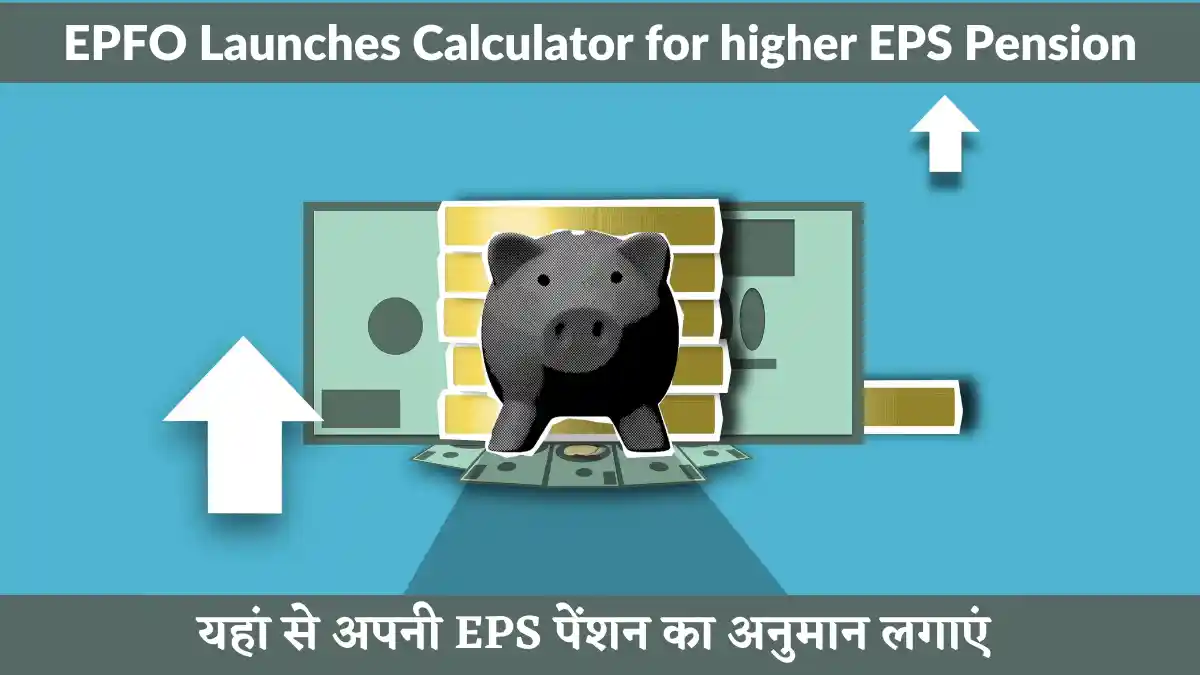EPFO Launches Calculator for Higher EPS Pension: The Employees’ Provident Fund Organization (EPFO) has introduced a calculator to help employees calculate the amount required to get a higher pension through the Employees’ Pension Scheme (EPS). This Excel-based calculator allows employees to estimate the amount they need to contribute from their EPF balance or personal savings to be eligible for a higher pension.
Contents
EPFO Launches Calculator for Higher EPS Pension
It is important to note that the last date to apply for a higher EPS pension is today, June 26, 2023. While the online application for a higher pension has been available for a few weeks, the employees were unsure about the contribution amount required. To address this, EPFO has launched a calculator to assist employees in their calculations.
To download EPFO’s Excel calculator for higher pension:
- Visit the Employees’ Provident Fund Organization (EPFO) member service portal.
- Click on the Pension Application link.
- Under the “Important Links” section, you will find the EPS Pension Calculator.
How to Use Excel Calculator for Higher EPS Pension Scheme Pension:
To use the EPS pension calculator, you need to know the date you joined the Employees’ Provident Fund (EPF) scheme. Enter the salary amount from the date of joining the EPF scheme or November 1995, whichever is later.
Provide salary details till the date of superannuation or till February 2023, whichever is earlier. The calculator will then determine the additional EPS contribution required to make up for the shortfall between the date of joining the EPS pension scheme and the date of retirement. This cooperation amount will have to be paid.
EPFO Launches Calculator for higher EPS Pension
The Excel-based utility will also calculate the total interest earned on missing contributions based on historical EPF interest rates for the respective months up to March 31, 2023. Both the additional contribution and the interest amount will be deducted from the employee’s EPF account. provided there is sufficient balance, and transferred to the EPS account.
The third tab in the Excel EPS calculator provides a summary of the total amount that will be transferred from the EPF account to the EPS account along with interest. This includes the following categories: total salary, contribution margin, interest, and total.
EPF Account Update Check
Please note that on May 3, 2023, the government announced an additional contribution of 1.16% from the employer’s share in the EPF account. For those opting for a higher EPS pension, an additional 1.16% of the actual basic pay (currently Rs. 15,000) over and above the pay limit will go into the EPS account. This means that a total of 9.49% of the basic pay above Rs. Rs 15,000 from the employer’s contribution towards a higher pension will be sent to the EPS pension scheme account.
The last tab of the calculator provides a summary of the amount that will be either returned or removed from the Employees’ Provident Fund Organization (EPF) account.
For the most accurate and updated information regarding EPS Pension Calculator and Higher EPS Pension Scheme, please visit the official EPFO website or contact EPFO directly.
Employees’ Provident Fund Organisation
However, for those opting for a higher EPS pension, an additional 1.16% of the actual basic pay (currently Rs.15000) over and above the pay limit will go into the EPS account. Therefore, a total of 9.49% of the basic salary above Rs 15000 from the employer’s contribution will go to the EPS Pension Scheme account for higher pension.
This means that up to a salary limit of Rs 15,000, a contribution of 8.33% will go to the EPS account. For a salary above Rs 15,000 (say Rs 25,000), 9.49% of Rs 10,000 (Rs 25,000 less Rs 15,000) will go to the EPS account. The last tab of the calculator shows a summary of the amount that will either be returned or diverted from the Employees’ Provident Fund Organization (EPF) account.

